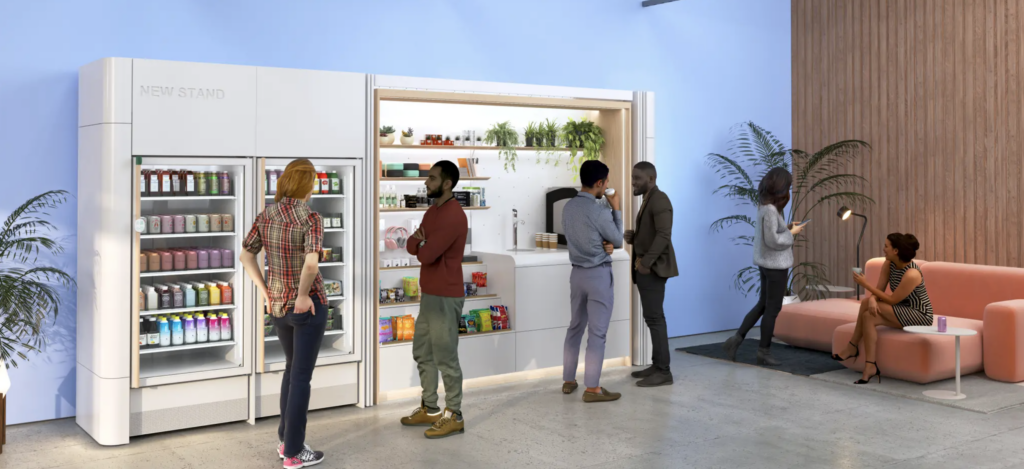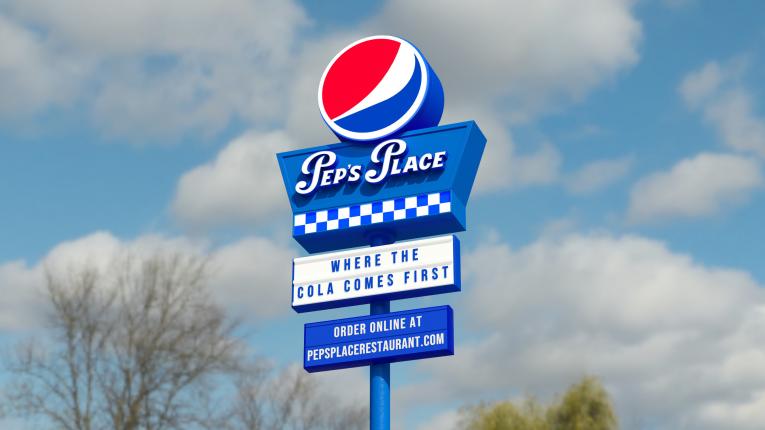PepsiCo Foodservice, which counts restaurants, hotels, universities and the like as customers, is acutely aware of evolving consumer preferences—and for that reason, it’s hyper-focused on delivering technological innovations to meet those consumer needs.
Take the consumer delivery preferences that have evolved during the pandemic: 70 percent of U.S. adults are ordering delivery or takeout at least once a week, and two thirds of U.S. adults are choosing a specific restaurant because of their delivery options, according to PepsiCo Foodservice CMO Scott Finlow. We spoke with him about the company’s marketing priorities for 2022, how it’s leveraging consumer insights to launch new digital-first technologies and the role that sustainability and purpose play in the brand’s marketing strategies.
Chief Marketer: What are the marketing priorities for PepsiCo Foodservice in 2022?

Scott Finlow, CMO of PepsiCo Foodservice: First and foremost, we continue to navigate through pretty significant change and disruption in our service world, as we do in our lives. Our approach continues to be people-first. That’s focusing on consumers, focusing on our customers, and also focusing on our own people on the team and in the business as well. The second thing is the role that foodservice plays. Our customers are restaurants, hotels, colleges and universities, theaters, et cetera. Those are businesses that have been in some ways more significantly disrupted than others, which has led to some of that focus.
And the other point I’d make is foodservice as a business plays a really important role for PepsiCo as a company. We are a leader in terms of growth, purpose-driven marketing and leading with different technologies and investments in that space. And that’s because a lot of behavior tends to happen first in foodservice. Therefore, we often and try to lead the way in order to adapt and meet those changing consumer needs.
CM: How are you approaching these priorities strategically?
SF: One theme, beyond being consumer-first, is being digital-first in terms of how we work, focus and help our customers in response to those consumer trends, and then continuing to lead with purpose as well. What we are seeing, whether it’s in areas like racial equality or sustainability, is that they are more important to consumers. They’re more important to our customers and they’re more important to our teams and our people as well. So we’re going to continue to be focused on those.
CM: What are some examples of those themes playing out?
SF: I’ll start with digital-first because it’s so important. We have a team which we call the Foodservice Digital Labs Team staffed with subject matter efforts to establish new capabilities on our marketing team, both internally and externally. It’s focused initially on helping to build our business and our brands in a digital-first world. We’re seeing that 70 percent of U.S. adults are ordering delivery or takeout at least once a week, and two thirds of U.S. adults are choosing a restaurant because of their delivery options. This certainly accelerated during COVID, but we’re seeing it be sustained and we believe that’s going to continue.
One of the most important things the Foodservice Digital Labs is doing is optimizing the consumer experience, that digital ordering and digital journey. We have a fairly simple model that we call the “Three Vs:” visibility, variety and value. It’s a basic and in some ways simple marketing execution model, but it’s driven some tremendous results when we adhere to the insights to ensure that our brands are represented in the right way. So we’ve got the right brands, we’ve got the right packaging, we’ve got the right images, we’ve got the right portfolio. And then the right value or bundles to ensure that we are helping our customers. We piloted it in 2021 and we are going to scale that significantly this year.
CM: What are some innovations that have come from the team?
SF: One example is the digital menu optimizer. This team has been working on emerging models that have come out of COVID or been accelerated in COVID, [such as] ghost-kitchen enabled businesses, including virtual brands. This is another area where we are seeing a sustained growth and we expect that to continue. We launched our own virtual brand enabled by a ghost kitchen together with one of our foodservice customers last year, called Pep’s Place. It was the world’s first fast beverage restaurant.
It was really exciting for us—the consumer experience we were able to create, the earned media that it generated for our Pepsi brand and the learnings we gained from the engineering, the backend and the partnership. We’re going to continue to do more of that this year and invest in that space.
CM: What are some of the consumer insights that are shaping the brand’s innovations?
SF: Convenience is even more important, and that convenience is manifesting in different ways. They’re expecting a seamless, easier user experience when they transact. The digital work I’ve talked about is one example of that. Another example is the Pepsi Quik Pick, the next generation of a vending machine. It’s enabled by computer vision and artificial intelligence. It enables you to tap and authenticate your payment. You open the cooler door, you choose whatever items you want, you close the door and then the payment and the transaction is closed. Super easy for the user and really easy for the operator, in the sense that no labor was required. It is, as we say in the industry, “unattended.” Importantly, in our pilot the technology has worked really effectively—99 percent of the time. And the user has said this is a really great experience.
From a commercial point of view, significantly higher revenues are driven by two things. One, people are more likely to choose more than one item when they do that. And secondarily, we’re able to present a wider range of products from our portfolio, including some that are more premium.
Another next-level premium experience: In partnership with a company called New Stand and Kansas University, which is one of our customers, we’ve taken a convenience store on campus, redesigned it and re-imagined it as an unattended, more premium store for the students. That’s one more example of where we’re testing and learning, not at the individual piece of equipment level, but at the entire store level, using some of the same technologies.
CM: Talk about your sustainability policies at the company, which I know rank high in importance for the brand.
SF: Sustainability is at the heart of PepsiCo’s strategy and vision, and we’re leading a strategic end-to-end transformation. This comes right from Ramon at the CEO level. We call it PepsiCo Positive. It’s at the heart of everything we are now laying out in terms of strategies. Some of our goals are achieving net zero emissions in 2040 and becoming net water positive by 2030. As a company, we have doubled down in the last three years on our sustainability strategies. And that’s because we recognize that the world we live in, the communities we serve and our own people require that.
In some of our colleges and universities in particular, they have in some cases asked us to help them provide solutions that don’t include plastic water bottles. We launched our product called SodaStream Professional a couple of years ago, a hydration station that we’re placing on campuses and in workplaces that creates a personalized user experience for people on campus to get their water. It allows you to customize your flavor, the intensity of your flavor, the level of carbonation you want, even the temperature of the product itself. Each one of those machines can save you in the ballpark of 20,000 plastic bottles a year. We’ve got some big plans to continue to scale that this year and beyond.
CM: Lastly, you mentioned in an executive roundup recently that to be successful as a CMO, marketers should focus on being purpose-driven. Can you expand on that a bit?
SF: For people in our world, whether they’re consumers or operators or our own employees, both sustainability and purpose are increasingly important to them. And we’ve seen each of them grow in importance through COVID, not shrink. In terms of purpose, [look at] what we did in the wake of the murder of George Floyd. We committed to invest $400 million dollars at PepsiCo over the course of five years to commit to a racial equality journey.
The example that I’m closest to and really proud of is Pepsi Dig In, which is a program that we created, developed and launched to support Black-owned restaurants. We recognized that there were a clear set of problems to solve around awareness of Black-owned restaurants, and we’ve implemented a number of different programs to support them. We’ve made a commitment to help them grow by $100 million [in sales] over five years. We established Pepsi Dig In Day on November 6th to provide focus, awareness, attention and drive traffic to those Black-Owned restaurants. We’ve got a program called Black Restaurants Deliver, which is a bespoke digital service that’s helped these restaurants build their own delivery capability. Many of them, because they’re smaller and more independent, didn’t have the point-of-sale systems and the ability to enable delivery during COVID.
[These examples show] our commitment from an R&D point of view and supporting those businesses and also the importance of that in the world we live in and for our teams. Purpose-driven leadership and marketing is so important, and that’s just one example of where we’re doing it.





 Network
Network

